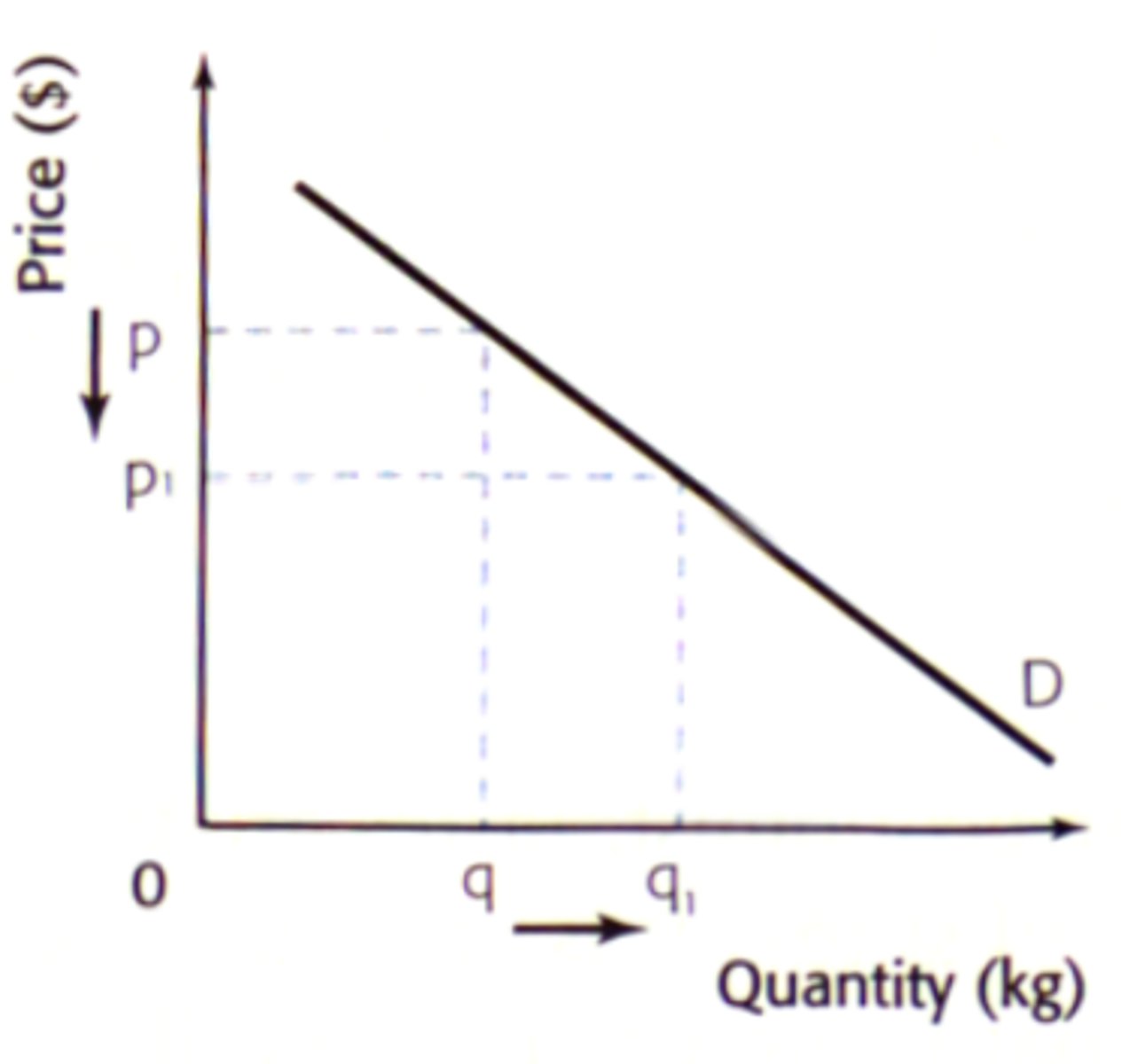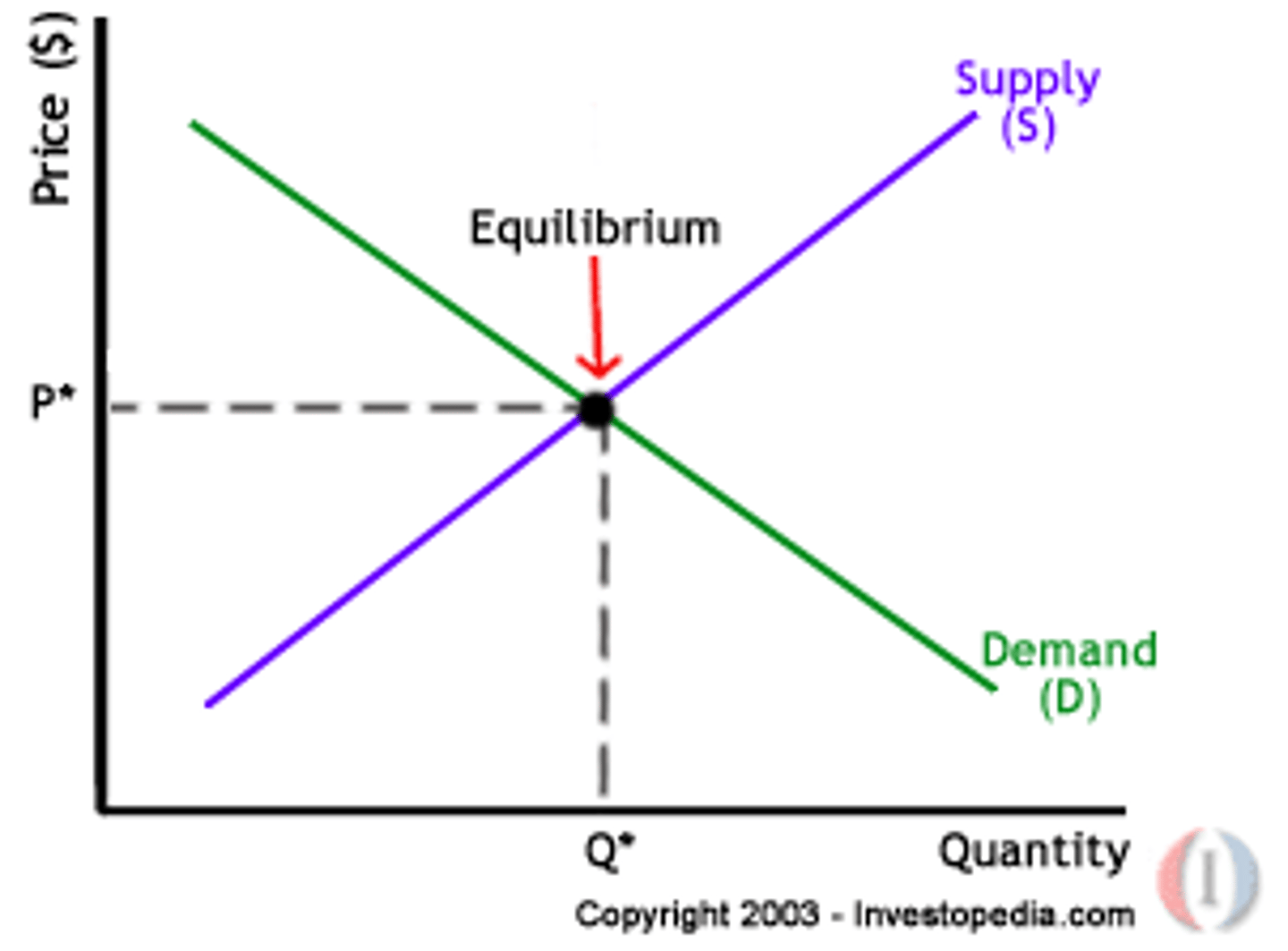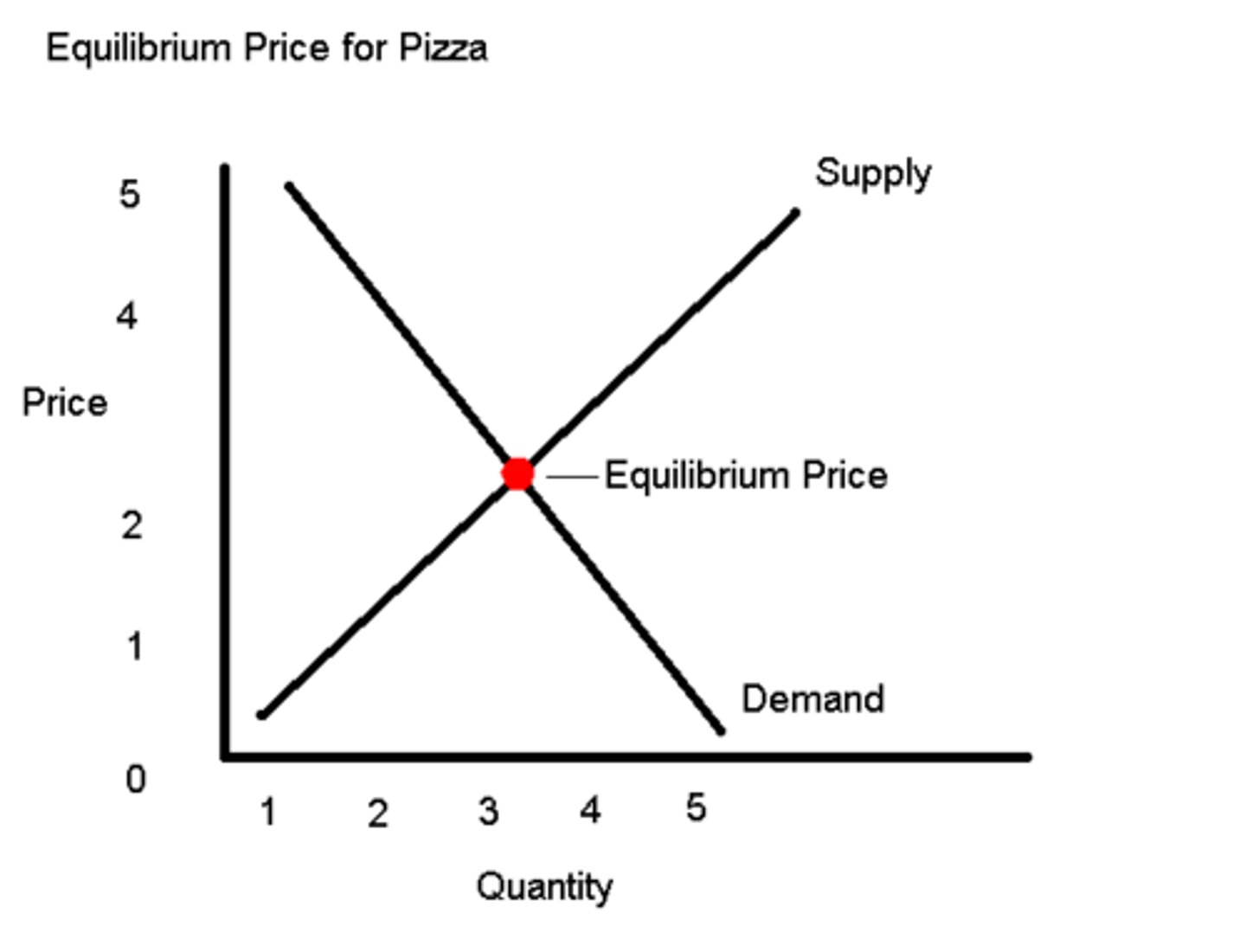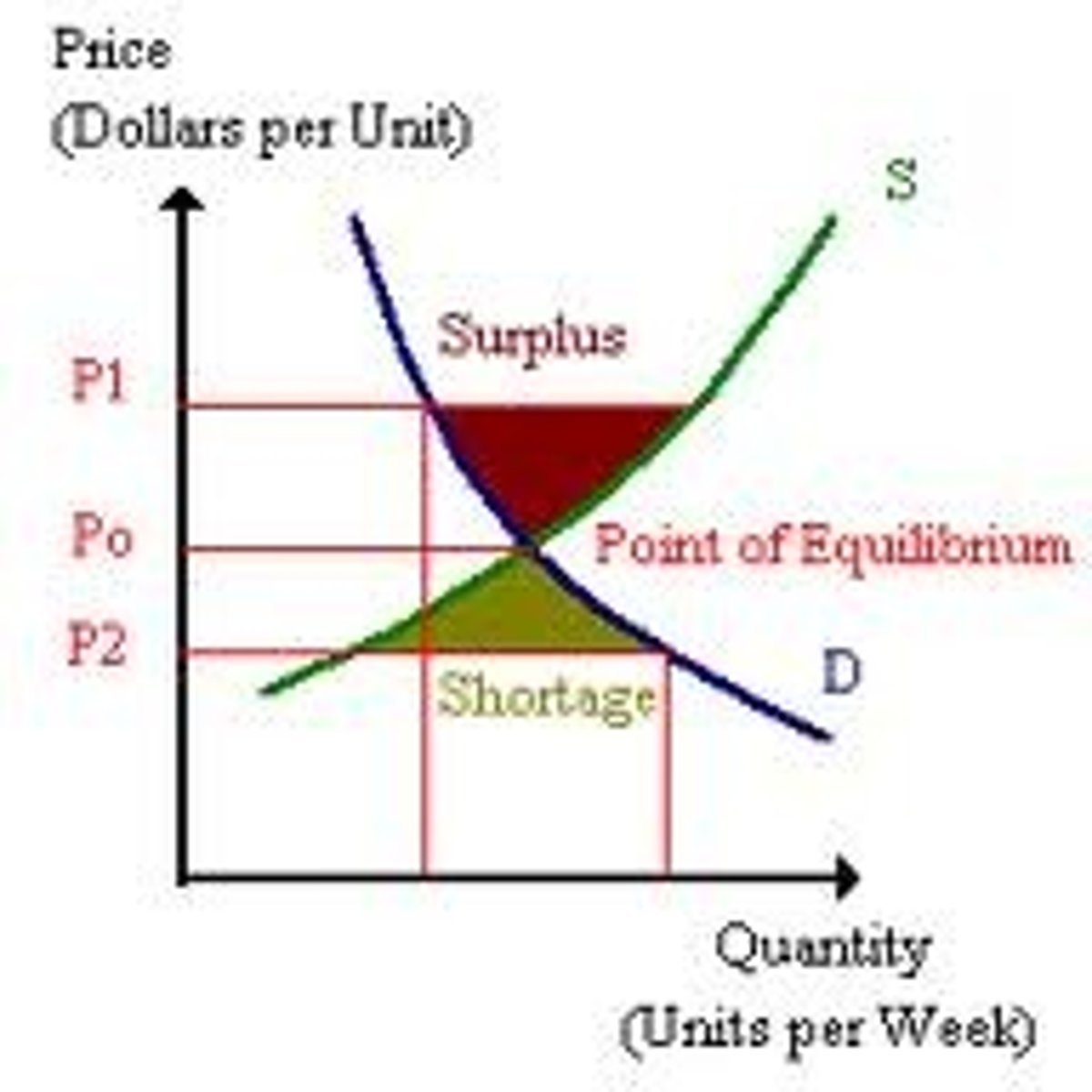GMU Econ 104 Exam 1
1/46
There's no tags or description
Looks like no tags are added yet.
Name | Mastery | Learn | Test | Matching | Spaced |
|---|
No study sessions yet.
47 Terms
Spontaneous Order
Economics is the bridge between two worlds; the inner subjective consciousness (mind, values, wants/needs, etc.) and social order (economy, market, institution, etc.)
Microeconomics
"Price theory"; observing the details of the consumers behavior, why are prices what they are, price of specific product, number of employees in a firm, etc.
Macroeconomics
"The Whole Economy"; coordination of everything, examines the performance and behavior of the economy as a whole, focuses on economic growth, interest rates, and inflation
Types of Spontaneous Orders
1. Price system (Information System)
2. Money (Medium of Exchange)
3. Financial Intermediaries (Banks)
4. Stock & Bond Markets (Exchange of Ownership)
5. Speculation & Future Markets (Information)
6. Accounting (Information)
Innovation
Stems from a division of labor and division of knowledge; No one person is able to produce a pencil. It comes from a long line of varied skills and knowledge from harvesting raw materials to producing the final product.
Theory
Abstraction away from reality; We simplify reality to find causation (like a roadmap), and derive future predictions. This is why theories can be disputed or lead to disagreements.
Normative Questions
Questions of "what ought to be". In Economics these are value judgments about what the economy should be like or what particular policy actions should be recommended to achieve a desirable goal, "what we should do", an opinion
Positive Questions
Questions about "what is", answers that can be proven, on facts and cause/effect relationships. In Economics this includes description, theory, development & testing, avoids value judgements
Basic Assumption 1: Scarcity Forces Choice
Scarcity always exists because all needs are not fulfilled by scarcity. Prices are evidence of scarcity, if something has a price it is scarce.
Basic Assumption 2: Only Individuals Choose (Methodological Individualism)
"We are the economy" because the choice-maker is the unit of analysis. There is no greater mind making decisions for us.
Basic Assumption 3: Rational Choice
There is purpose and intent in our choices; we are aiming for some objective (a means to an end). One can make mistakes and still be rational.
Basic Assumption 4: Unlimited Wants & Desires
Humans are hardwired to imagine and want. Satisfaction just leads to "what's next?"
Aristotle Coins "Economics" ~300 BCE
Posed the "Equality of the Exchange" idea in which people make trades of equal values which sets the price.
The problem with this is no trade is possible with equal values. Trade must be beneficial, thus prices arise from unequal values.
St. Thomas Aquinas' Scholasticism 1300 AD
The "Just-Price" Doctrine was inherently flawed because it was a normative theory in search of a positive answer. Instead of questioning a price it was judged on fairness.
The problem is that one "just price" does not exist. The Salamanca's come to this conclusion in the 1600's
Mercantilism (Colbertism) 1500's-1776 (Thomas Mun, John Law, and Jean Colbert)
4 Fatal Flaws:
1. All social order was "planned" by king/govt. (Need spontaneous order).
2. Money wasn't wealth for the nation. (Goods & Services are real, money isn't (nominal variable)).
3. Trade was a "zero-sum" game. (Trade should produce positive gains).
4. People were separated from the economy (King was taking 80% income, people were poor and suffering)
Ossification (from Mercantilism)
Planning that ends up resulting in complete chaos
Adam Smith's Classical School 1776
Found Mercantilism ethically and scientifically false, says markets are driven by self-interest and greed, the dialogue of the marketplace is mutual reciprocity, and there is an invisible hand to move economic forces.
Mutual Reciprocity
Both parties receive positive gain
Invisible Hand
A phrase coined by Adam Smith to describe the process that turns self-directed gain into social and economic benefits for all
Classical Price Theory Mistakes
1: Logic of an infinite regress in value; explaining prices with prices.
2: Labor was the source of value; labor is not a source of value.
3: Intrinsic and Objective view of value. Value is subjective. Subject attaches value to an item. (Water-Diamonds Paradox)
4: The relevant quantities are wrong. Had no concepts of margins, scarcity imposes margins.
Labor Theory of Value
The belief that all value in produced goods is derived from labor.
Incorrect because value is not imposed effort but how the mind relates its needs
Water-Diamonds Paradox (The Paradox of Value)
Water is very useful but has a low price, while a diamond is not very useful but has a high price
Modern Mircoeconomics Theory 1871 (Carl Menger, Will Jevons, Leon Welras)
The answer to the water-diamonds paradox: Marginalism and Subjectivism. If you're dying of thirst in the desert you may pay the price of a diamond for water.
Marginalism
The discrepancy in the value of goods and services is explained by reference to their secondary, or marginal, utility.
Scarcity imposes a margin
Subjectivism
Value is set by the subjective mind
Values and Exchange
1. Gift from Nature
2. Gift from others (Charity)
3. Violence or Coercion (mafia/govt)
4. Market: Production & Exchange - Institutionalized respect
The Law of Demand
Consumers will buy more of a good when its price is lower and less when its price is higher.
Inverse relationship between relative utility price of good to quantity demanded

The Law of Supply
Producers offer more of a good as its price increases and less as its price falls.
Positive relationship between real price of good and quantity supplied

Equilibrium/Market Clearing Price
Where the minimum selling price meetings the maximum buying price. Where the Supply and Demand curves intersect.

Surplus
A situation in which quantity supplied is greater than quantity demanded. Above equilibrium on S&D curve

Shortage
A situation in which quantity demanded is greater than quantity supplied. Below equilibrium on S&D curve.

Changes in Demand
Shifts of the demand curve due to changes in tastes, income, other goods, or expectations, etc.
Increase in demand = shift to right
Decrease in demand = shift to left
Elasticity Coefficient
EC > 1 = normal good (income & demand move in same direction)
EC < 1 = inferior good (income & demand move in inverse direction)
Changes in Substitute Goods
Price moves in the same direction
Changes in Complement Goods
Price moves in the opposite direction
Changes in Supply
Shifts of the supply curve due to changes in values, number of sellers, technology, taxes/subsidiaries, etc
Increase in supply = shift to right
Decrease in supply = shift to left
Movement Along S&D Curve
An indication of a change in quantity. The curve will not shift for a change in price.
Price Controls
Price controls are people controls because prices reflect people's values in a world of scarcity.
Minimum Price Control (Price Floor)
A situation where the government sets a minimum price that is above the equilibrium price, preventing producers from setting the price too low. Causes surpluses to pile up.
An example of this is the minimum wage (Unemployment increases when a minimum wage is established, and shifts demand from unskilled to skilled labor)
Price Support
The maintenance of a price at a certain level through government intervention
Wickard vs. Filburn
1942, Congress passed a law regulating the amount of wheat that could be sold under the commerce clause, Filburn grew more than legal amount but does not sell it, Congress says it is still illegal, Supreme Court rules in favor of Congress (9-0)
Maximum Price Control (Price Ceiling)
A situation where the government sets a maximum price that is below the equilibrium price preventing producers from raising the price too high
An example of this is rent. Putting a ceiling on rent leads to quantity and quality deterioration and a housing shortage.
Nixon Price Control on Oil & Natural Gas
Led to shortage. Quantity demanded declined, took a day for three gallons of gas.
Attempted but failed remedies: Odd-Even rationing by license plate #, Gas coupons only usable in some states, proposals for national 25 y/o driving age and driving restrictions
The Law of Comparative Advantage
The individual, firm, region, or country with the lowest opportunity cost of producing a particular good should specialize in that good
Trade Always Balances
Current Account (Value of goods & some services moving through consumers) + Capital Account (Net foreign investments) = 0 (If not there is a statistical discrepancy)
Tariffs
Taxes on imported goods
Arguments Against Free Trade
1. Protecting High Wages (Untrue, wages reflect productivity)
2. Saving Jobs (Untrue, tariffs are a barrier to entry
3. Dumping (Untrue, money that would have been spent now isn't)
4. Fair or Reciprocal Trade (Untrue, tariffs make people poorer)
5. National Security (Untrue, restrictions lead to black market trade, etc.)